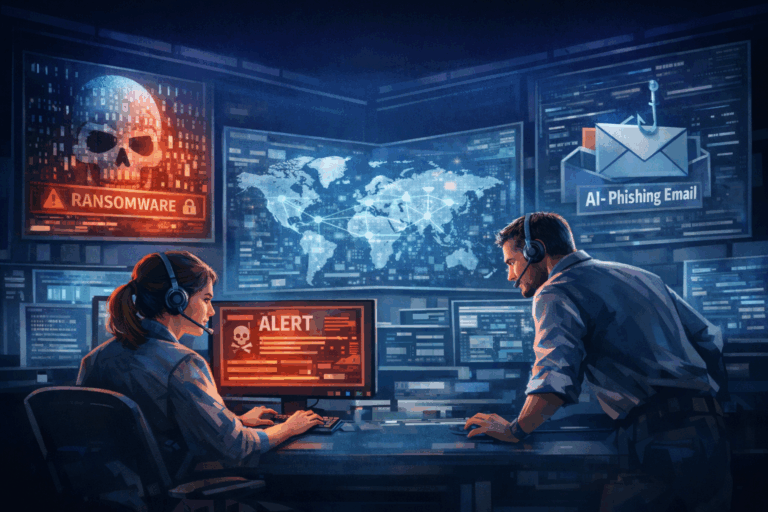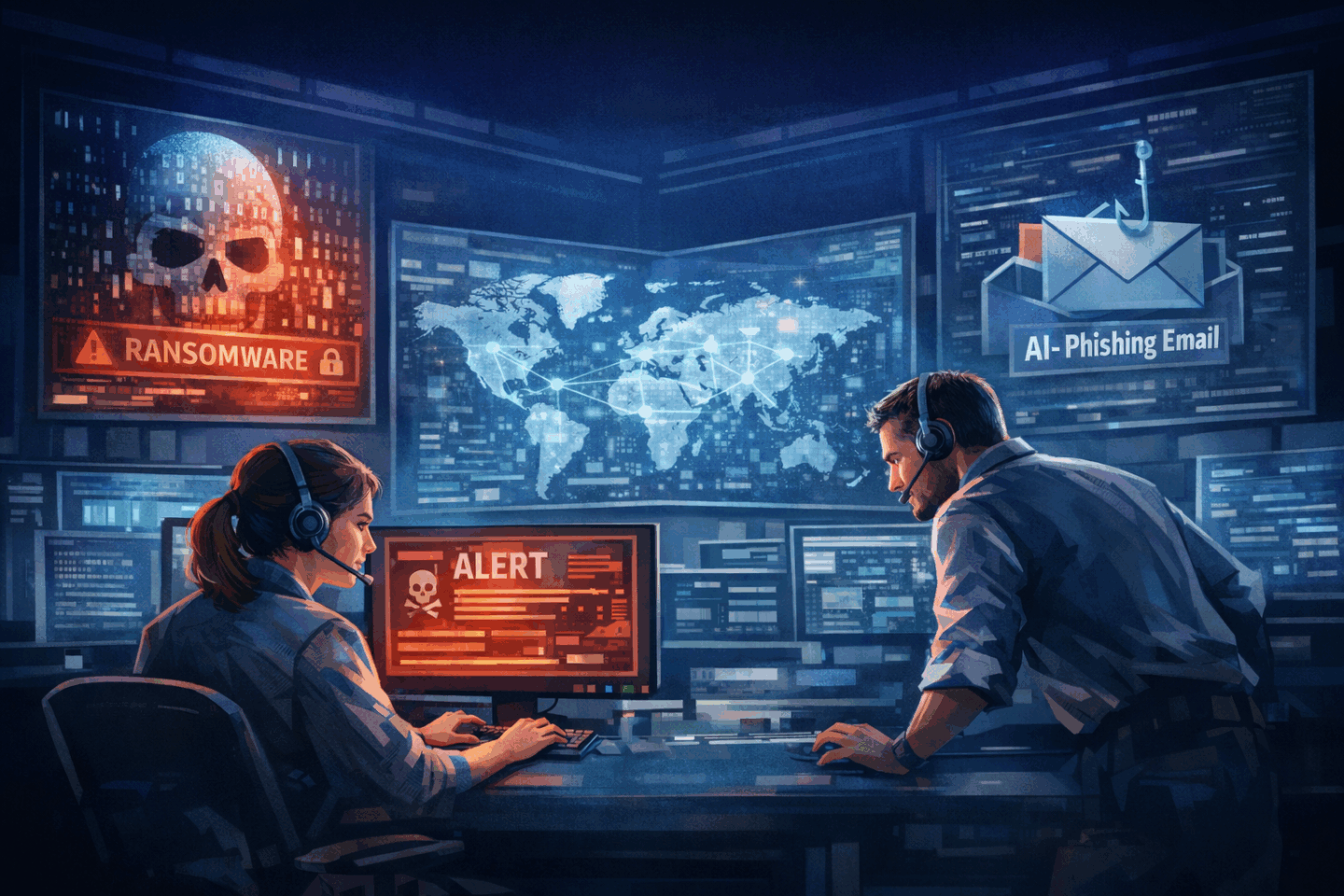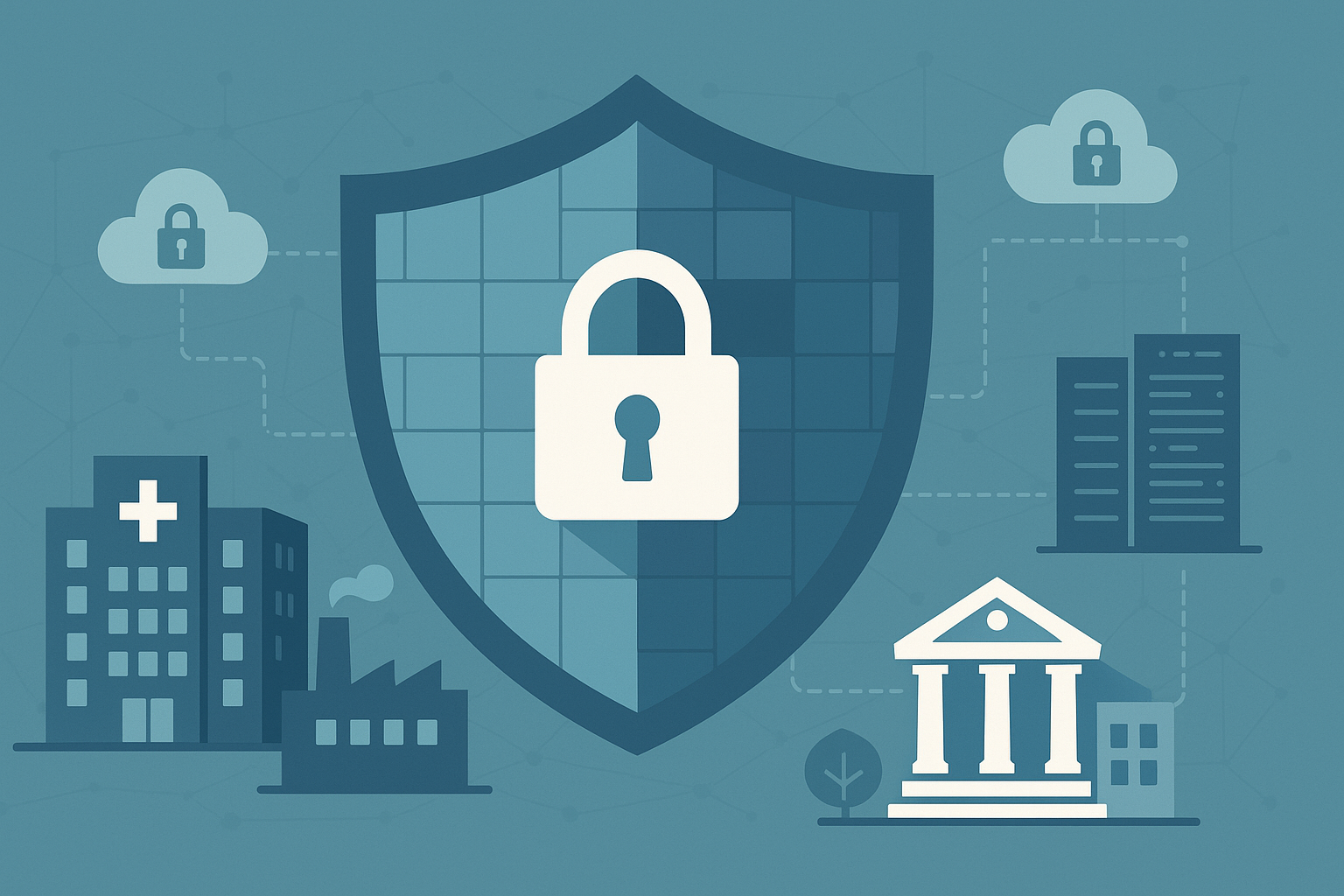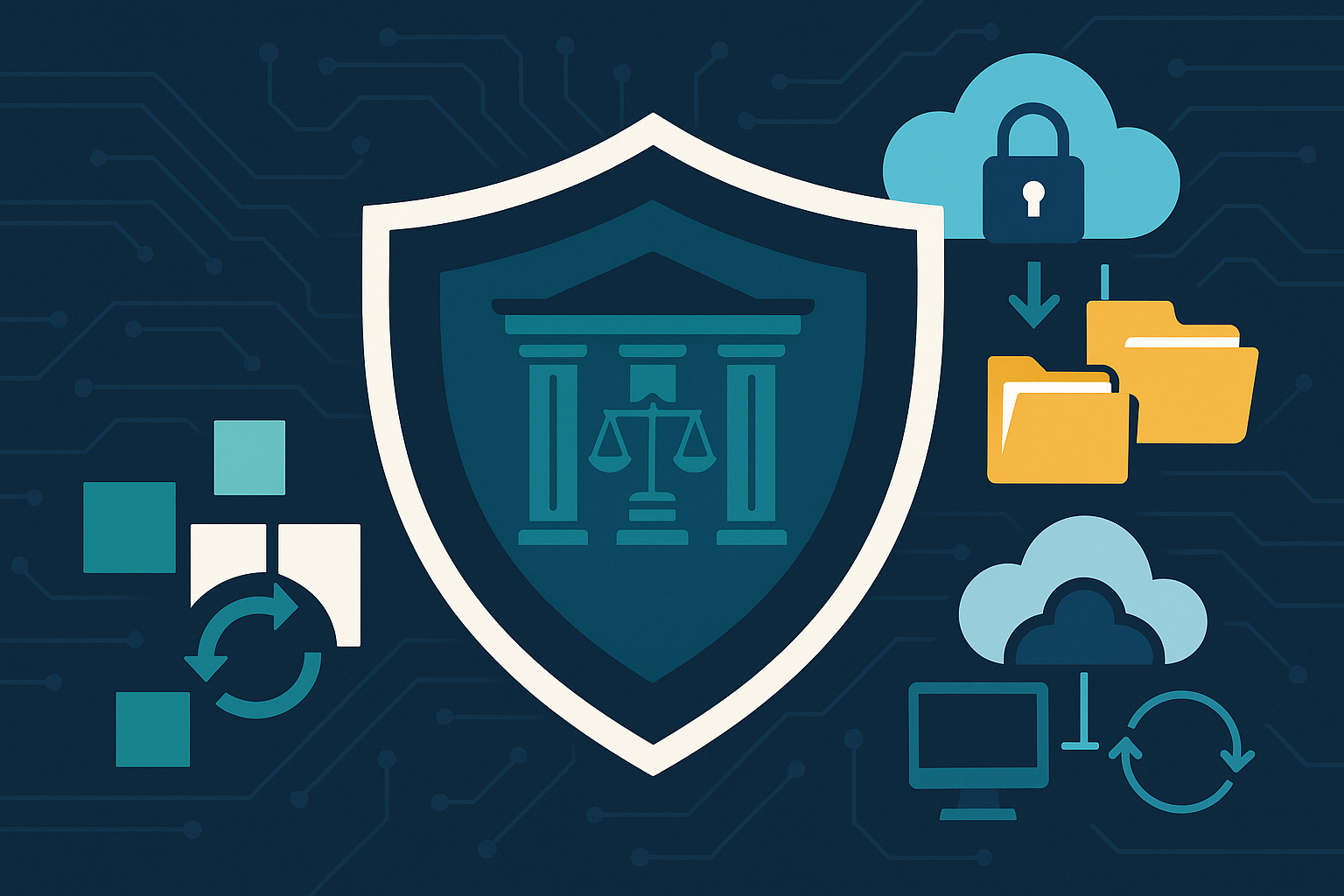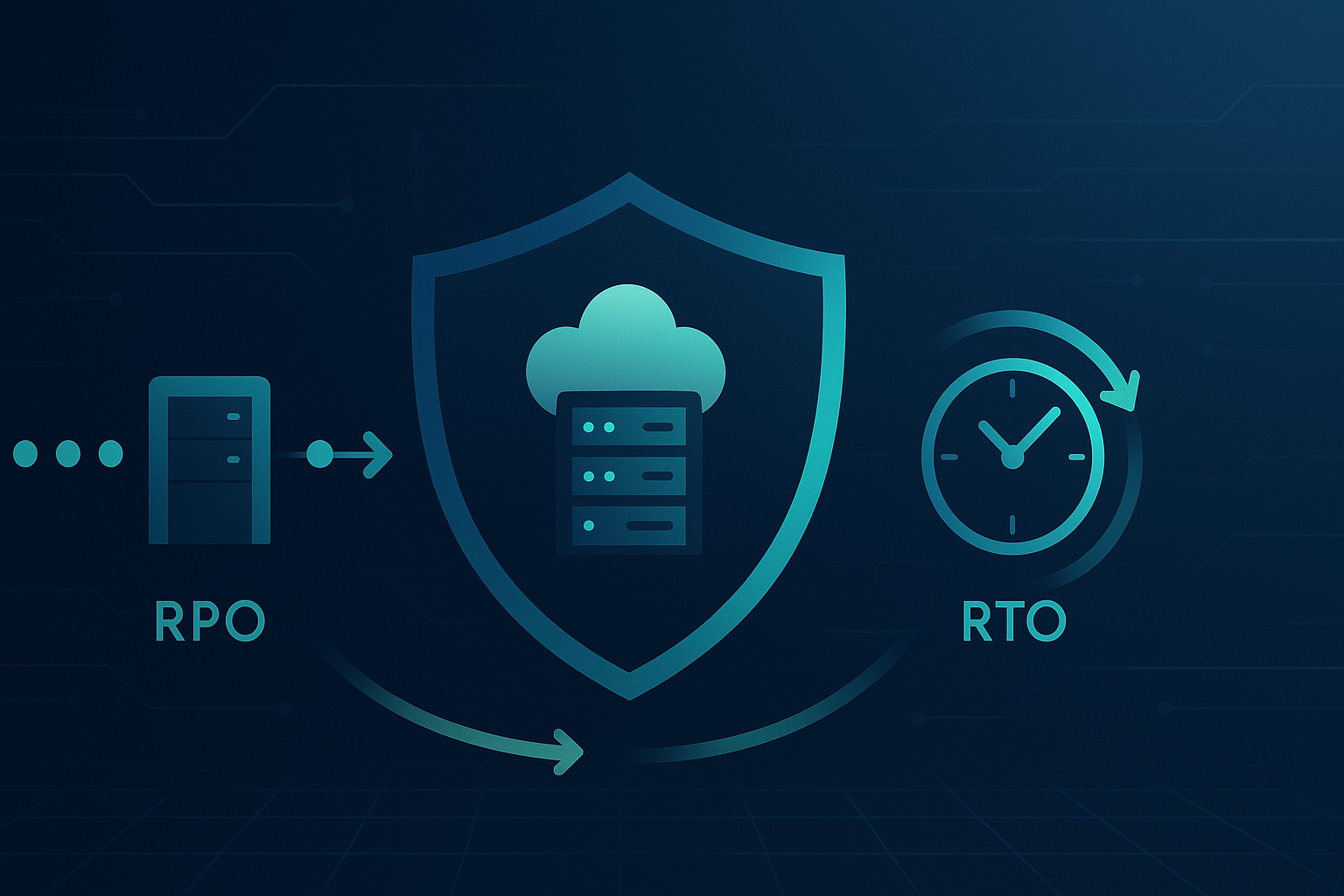DATA PROTECTION TRENDS, NEWS & BACKUP TIPS
When a Hospital Goes Dark: A Ransomware Nightmare and the Power of Rapid Recovery
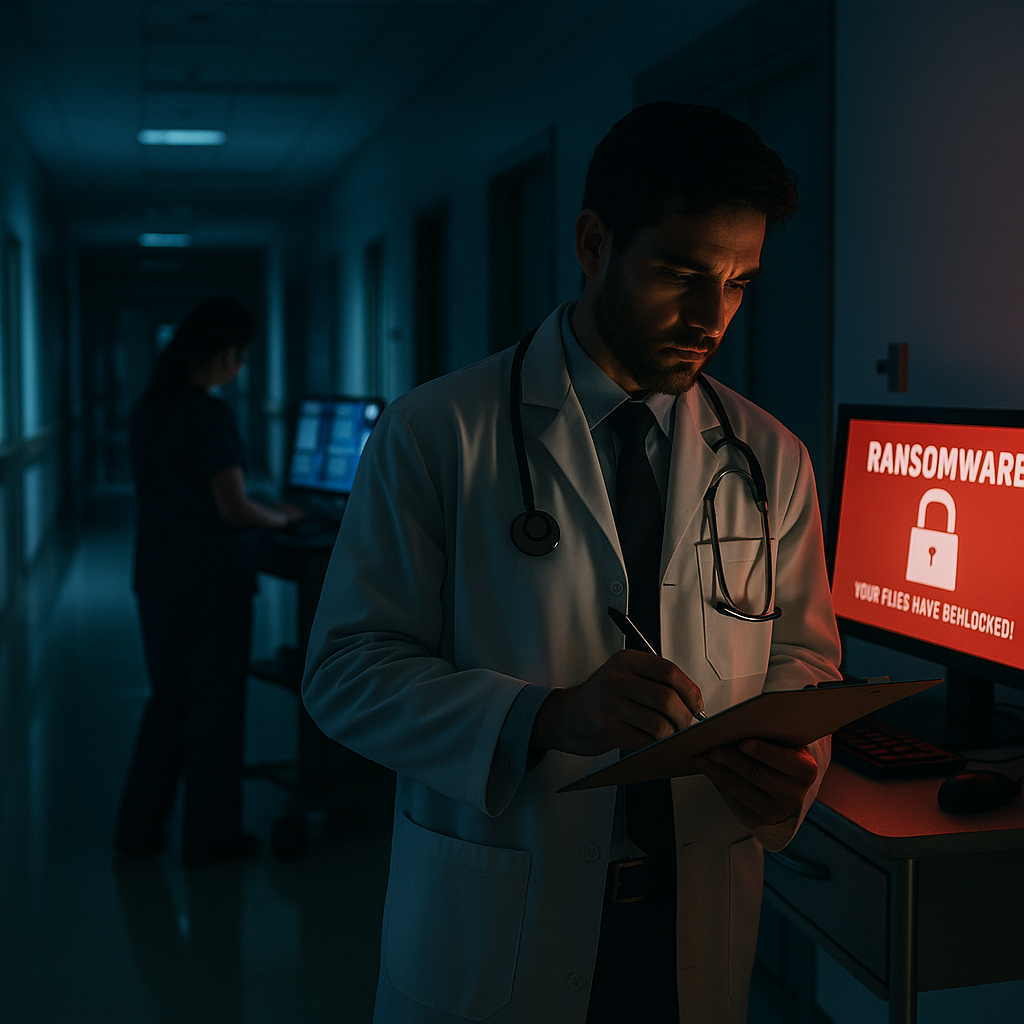
A Midnight Breach in the ER: A Healthcare Ransomware Nightmare
It’s 2:00 AM on a Wednesday at a regional hospital. Nurses at the ICU station suddenly find their screens frozen. A red ransom note flickers on the electronic health record system, demanding payment in cryptocurrency. Within minutes, patient histories, lab results, and even the pharmacy system are inaccessible. The ER’s monitoring systems are disrupted. Staff scramble to switch to paper charts and radio communications. Surgeries scheduled for dawn are postponed because imaging and patient data can’t be retrieved. Panicked clinicians do their best to care for patients without digital tools, but every moment lost puts lives at risk.
Unfortunately, this scenario is all too real. In one 2020 attack, a major hospital had to cancel surgeries and delay cancer treatments when ransomware took down its network. In that case, even basic communication failed, forcing staff to buy walkie-talkies to coordinate care. Ransomware attacks have disrupted chemotherapy, postponed maternity appointments, and even forced ambulances to be diverted when emergency rooms couldn’t accept new patients. The stakes in healthcare couldn’t be higher.
When Recovery Falls Short: How Poor Preparation Worsens the Outcome
In our late-night hospital breach, the true nightmare is only beginning. Why? Because like too many small and mid-sized healthcare organizations, this hospital’s recovery plan was flimsy. Backups were stored on a local network drive, one that the ransomware swiftly encrypted along with everything else. The IT team, running on fumes, discovers the most recent offsite backup is from six months ago on an old tape that may or may not be usable. There is no documented disaster recovery plan for a total network outage. With critical systems down, leadership faces an agonizing choice: attempt a slow rebuild of servers from scratch (if that old backup tape even works), or consider paying the ransom and hoping the attackers actually provide a decryption key.
Every hour of downtime risks patient safety and costs money. (Industry analyses show that some hospital ransomware incidents have led to systems being offline for weeks.) In this unprepared hospital, days stretch on in chaos. Patient care moves at a crawl. Trust erodes among staff and the community as updates remain grim. It’s a scenario no healthcare IT leader wants to endure – and one that could have been avoided with better preparation.
What went wrong? Simply put, the hospital’s backups and recovery strategy weren’t built for a ransomware era. The backups weren’t isolated or protected from attack. No one had tested the restore process, so hidden failures went unnoticed until the moment of crisis. There was no ready-to-launch recovery environment to run critical applications while primary systems were repaired. Poor recovery preparation turned a ransomware incident into a full-blown disaster. It’s a harsh lesson: when critical care systems go dark, only a well-planned recovery strategy can light the way out.
The Cure: Backup and Recovery as a Service (BRaaS) and DRaaS
Now, imagine a different ending to this story, one where the hospital is hit by ransomware but resumes operations within hours. This is possible with a robust backup and disaster recovery strategy, often delivered through Backup Recovery as a Service (BRaaS) and Disaster Recovery as a Service (DRaaS). These as-a-service solutions provide on-demand, expert-managed data protection so that even smaller healthcare providers can bounce back quickly from cyber chaos. The goal is simple: protect patient data, ensure backups survive the attack, and get critical systems running again fast, minimizing downtime.
In practice, BRaaS/DRaaS means having highly reliable backups and an orchestrated recovery plan handled by specialists. It’s like having an offsite vault of your medical data and a standby emergency data center, without the cost of building one yourself. When ransomware strikes, you don’t have to scramble – the pieces are already in place to restore what matters most. Let’s break down the key components of an effective healthcare backup and recovery architecture:
- Immutable Offsite Backups: Your backups must be untouchable by ransomware. “Immutable” means once a backup is written, it cannot be altered or deleted, not by hackers, not even by admins accidentally. For example, backups stored in a write-once-read-many format or object storage with retention locks ensure that attackers who breach the network can’t encrypt or destroy your backup copies. At least one copy of critical data (e.g. patient records, EHR databases, imaging archives) should be stored offsite in an immutable form. This guarantees a clean reserve of data to restore from, even if production systems are compromised. In our scenario, if the hospital had immutable, off-network backups, the IT team could ignore the ransom demand entirely and start recovery immediately from those secure copies.
- Isolation and Clean-Room Restores: A best practice is to recover in an isolated “clean room” environment before fully restoring systems to production. This means spinning up servers and applications from your backups in a secure sandbox where you can verify that the restored data is malware-free. By practicing recovery in a quarantined network (with separate, fenced-off infrastructure), you avoid reintroducing ransomware or other hidden viruses back into the hospital’s network. In a clean-room restore, IT teams can scan backup images for malicious code and test that applications run correctly. Only once the data is confirmed clean do they reconnect systems to the main network. This approach would have saved our hypothetical hospital from a second infection wave – or from restoring corrupted files. Modern DR solutions even automate this process: for example, some platforms use on-demand cloud servers to instantiate your backups and run verification scans (sometimes called Secure Restore) in minutes. The result is higher confidence that when you do failover back to production, you’re bringing back healthy systems, not virus time bombs.
- Multi-Factor Authentication and Access Control: Ransomware often succeeds by targeting not just primary systems but also the backup environment. Attackers know that if they can delete or encrypt your backups, they gain leverage. To counter this, any serious backup solution must lock down access to backups. This means requiring multi-factor authentication (MFA) for anyone managing or deleting backups, using role-based access so no single admin can sabotage retention policies, and separating backup credentials from the regular hospital network. For instance, backup administrators should have unique logins that aren’t tied to the hospital’s primary Active Directory, reducing the chance that a phished password on the corporate network could be used to infiltrate backups. By enforcing MFA and least-privilege access, even if attackers steal an IT staffer’s credentials, they’ll hit a wall when trying to tamper with the backup repository. In our opening scenario, stronger access controls could have prevented the intruders from wiping out the on-site backups so easily.
- Offline and Offsite Backup Tiers: In addition to immutable cloud backups, many healthcare IT leaders employ an offline tier for ultimate protection. This might be encrypted backups on tape cartridges stored securely off-premises, or periodic backups that are completely disconnected from the network (true “air-gapped” copies). Offline backups act as a last line of defense – even if your entire network is compromised, the attackers cannot reach data that isn’t network-accessible. The downside is that offline restores can be slower. However, for vital patient data that changes less frequently, having a weekly or monthly offline backup could be a lifesaver in a worst-case scenario. The 3-2-1 backup rule (3 copies of data on 2 different media, 1 offsite) is still a solid guideline in healthcare. Increasingly, BRaaS providers help automate this process by replicating data to secure cloud vaults or geographically separate data centers.
- Fast Recovery and DR Orchestration: Backups alone aren’t enough, you need to restore operations quickly. This is where DRaaS shines. Disaster Recovery as a Service can spin up your critical servers in a cloud environment or secondary site in a coordinated way, so the hospital can keep functioning while primary systems are fixed. Think of it as a temporary hospital IT environment in the cloud. For example, a DRaaS solution might leverage your latest backups (which are safe and immutable) and within an hour start up virtual replicas of your EHR servers, database servers, and even clinical applications on a clean cloud network. Users can be securely rerouted to that environment to continue operations. A well-designed DRaaS playbook will orchestrate networking, security, and authentication as well, perhaps setting up a VPN for hospital staff to access the cloud systems. The result: clinicians get access to the tools they need to treat patients, and downtime is measured in hours instead of days or weeks. Recovery Time Objectives (RTOs) – the goal for how quickly systems must be restored, can be met consistently. In fact, modern managed DR solutions have achieved recovery in hours instead of weeks by automating failover steps. In our scenario, with DRaaS the hospital might have resumed digital operations the same morning as the attack, using a parallel environment while cleaning the infection from their main network.
- Regular Testing and Expert Guidance: Having the tools is one thing; knowing they work when needed is another. That’s why continuous testing and professional support are integral to BRaaS/DRaaS. Recovery drills, from simple file restore tests to full-scale simulated ransomware recovery in a clean room – should be scheduled and performed frequently. These drills not only validate that backups are intact and malware-free, but also train the IT staff in the recovery procedures. Each test provides a measurement: how long did it take to restore an EMR database? Were all dependencies accounted for? What bottlenecks appeared? By treating recovery tests as regular fire drills, hospitals can refine their plans and ensure there are no surprises during an actual crisis. Importantly, such testing routines can be automated and managed by a service provider as part of BRaaS. Many SMB healthcare IT teams are stretched thin; partnering with a specialist means you get a dedicated disaster recovery team on call. They assist with setting up runbooks (step-by-step recovery guides), monitoring backup health, and even sending monthly reports certifying that your backups were tested and your data is recoverable.
Resilience, Reliability, and Relief for Healthcare IT
For healthcare IT leaders in small and mid-market organizations, the prospect of a ransomware attack is daunting. You operate with tight budgets, lean teams, and 24/7 demands, a far cry from the resources of large hospital networks. Yet, the practical need for uptime and data safety is just as critical in a 50-bed community hospital as in a major medical center. This is where tapping into BRaaS and DRaaS can level the playing field. By leveraging cloud-based backup and recovery services, you gain access to enterprise-grade protection without massive upfront investment. You don’t need a second data center or a large staff dedicated to disaster recovery. A managed provider can handle the heavy lifting: from configuring immutable storage and offsite replication to orchestrating a full failover of your environment at 3 AM if necessary.
Most importantly, these strategies put patients and caregivers back at the center. When an attack hits, caregivers can continue caring. Doctors can access critical patient information via recovered systems; nurses can coordinate using restored communication tools. The hospital’s “heart” keeps beating. Technical resilience translates to clinical resilience, less deferred care, fewer errors from working on paper, and maintained trust in your facility’s ability to serve the community.
In the initial dark scenario, the hospital was a victim with few options. In the improved scenario, preparation turned a potential catastrophe into a recoverable hiccup. It’s the difference between chaos and control. As one cybersecurity adviser put it, in healthcare “failure to access essential networks and files is not an option”. By investing in strong backup and recovery architecture now, you ensure that even if ransomware strikes, it cannot cripple your mission to care for patients.
The message is clear: Recovery speed depends on preparation. With immutable backups guarding your data, clean-room practices ensuring a safe restoration, MFA and offline layers shielding the backups, and expert-driven DRaaS ready to bring systems back online, you can withstand what comes. In the face of ransomware, your hospital or clinic can go from vulnerable to virtually unbreakable. When the lights flicker, you’ll be ready to keep healing without missing a beat.
